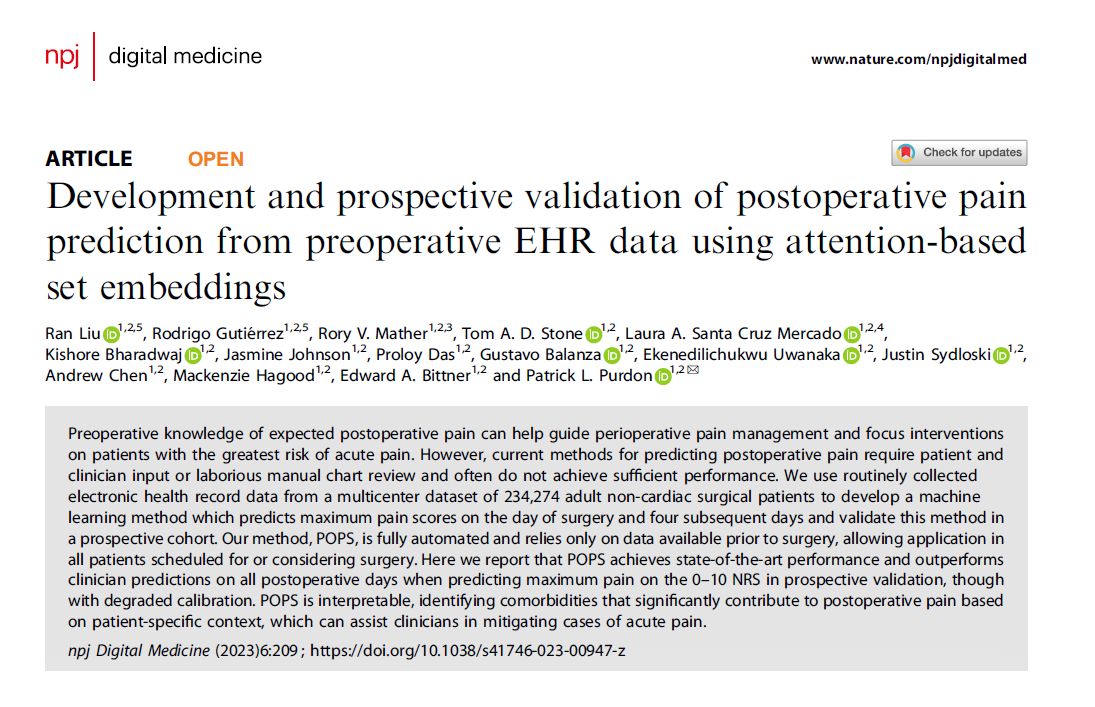
Gustavo Balanza
@balanzagus
Instructor at Stanford University.
ID: 1499130044391825417
02-03-2022 21:10:44
22 Tweet
42 Takipçi
141 Takip Edilen

Happy to have contributed to this work Journal of Clinical Anesthesia sciencedirect.com/science/articl…


Study reveals #fentanyl's effects on the brain PNAS Nexus doi.org/gqqswm medicalxpress.com/news/2022-08-r…






Researchers from Department of Anesthesia, Critical Care and Pain Medicine at MassGeneral News and colleagues find that fentanyl produces a unique brain signature, in a PNAS Nexus study. doi.org/10.1093/pnasne…


Excited to share this work finally published PNAS Nexus. We are trying to better understand what the brain tells us under the effects of Fentanyl @MGH_PurdonLab Mass General Anesthesia #Fentanyl #EEG #Opioid academic.oup.com/pnasnexus/arti…

New paper from Fangyun Tian Nature Communications shows that ketamine increases gamma oscillations in frontal and limbic structures, and that propofol can reverse this effect in prefrontal cortical structures. doi.org/10.1038/s41467…

Our study found that reduced opioid administration during surgery may have the unintended outcome of increasing postoperative pain and opioid use. The paper is now out on JAMA Surgery. Read it here: jamanetwork.com/journals/jamas…




Thanks to everyone in the The PurdonLab Ryan Nipp, MD, MPH, FASCO Gustavo Balanza Rodrigo Gutiérrez Ran Liu and teams at Mass General Anesthesia Stanford Anesthesiology who helped contribute to this work!


Kathleen L Poston Stanford Neurosurgery Stanford Neurology & Neurological Sciences Wu Tsai Neurosciences Institute Stanford Medicine Next up is neuroengineer Patrick Purdon, who discusses whether EEG can serve as a marker of brain resilience. He notes that we still understand little about delirium, but new EEG tools may help track real-time cognitive changes in clinical settings.


A The PurdonLab classic.









